Bluebirds are a delightful addition to any backyard, with their vibrant plumage and cheerful songs. In this guide, we will explore effective methods that will help you create an inviting habitat for these beautiful birds, allowing you to enjoy their presence all year round.

What is a Bluebird?

Eastern bluebirds (Sialia sialis) are really big fans of mealworms.
©Steve Byland/Shutterstock.com
A bluebird is a stunning species of bird that is found in a variety of habitats across the world. They are typically characterized by their bright blue feathers, although some species may contain other colors in their plumage. Depending on the species, bluebirds can range in size from 6 to 8 inches, making them fairly small birds.
When it comes to habitat, bluebirds can be found in a variety of places, from open meadows and grasslands to wooded areas. They also have a strong presence in suburban and urban parks and gardens. Bluebirds prefer to live in areas with plenty of available nesting sites, such as hollow trees or birdhouses.
The diet of a bluebird primarily consists of insects, such as beetles, caterpillars, grasshoppers, and moths. They will also eat small fruits, such as berries and cherries, as well as nectar from flowers. Bluebirds may also occasionally take advantage of bird feeders, especially during the winter months.
In terms of physical appearance, bluebirds have slender bodies and short tails. They have a pointed bill which is used to catch their prey and a white or pale yellow throat. The male bluebird is typically more brightly colored than the female and can range in color from light blue to a deep, vivid blue.
Types of Bluebirds in North America
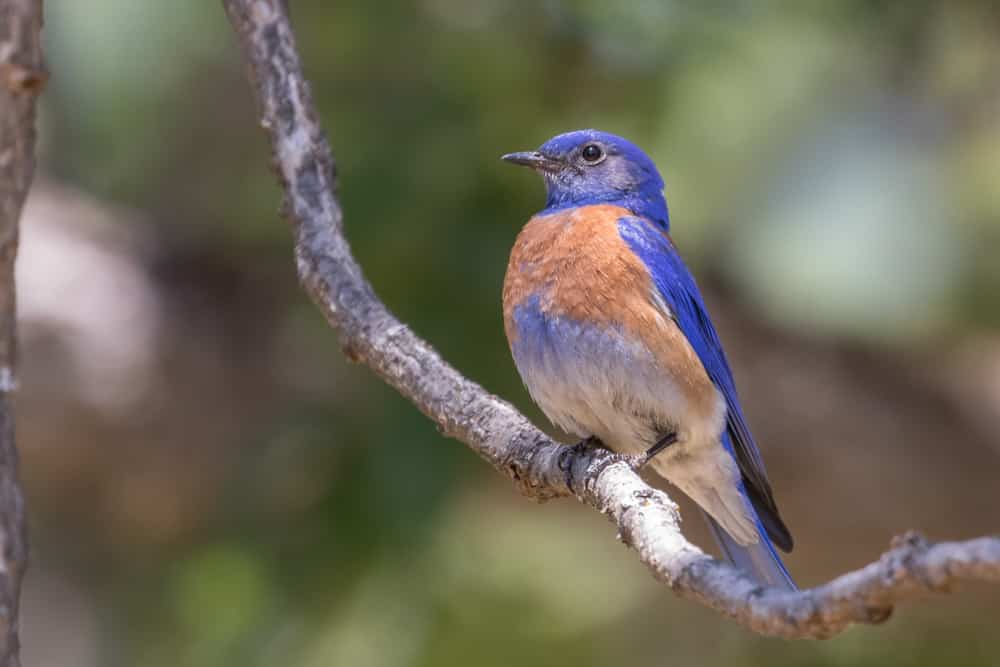
The western bluebird makes a nest in hollow or dead trees.
©Hayley Crews/Shutterstock.com
North America is home to three distinct species of bluebirds. These species are the eastern, western, and mountain bluebirds.
The eastern bluebird is the most widely distributed of the three species and can be found across the eastern half of the continent from the Atlantic coast to the Rocky Mountains. They are medium-sized birds, with males having a bright blue back and wings and a reddish-orange chest. The female eastern bluebird is a duller grey-blue with a paler chest.
The western bluebird is found in the western United States and parts of Canada. They are slightly larger than the eastern bluebird and have a more vibrant blue color with an orange-brown chest. The female western bluebird is more grayish-blue with a paler chest.
Finally, the mountain bluebird is larger than the other two species and is a bright blue color with a white chest. The female mountain bluebird is a dull grayish-blue with a paler chest. They are found across the western half of North America from Mexico to Canada.
All three species of bluebirds are beautiful birds! With the help of conservation efforts, these three species of bluebirds should continue to be a familiar sight in North America for years to come.
Why Attract Bluebirds?
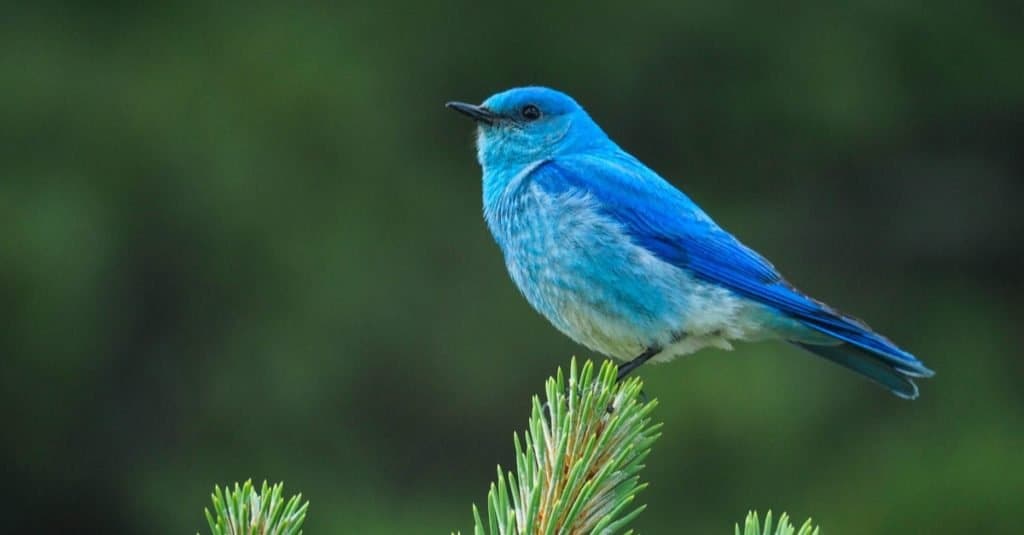
The mountain bluebird is a medium-sized bird with a light underbelly and black eyes.
©MTKhaled mahmud/Shutterstock.com
Bluebirds are a beneficial part of the ecosystem for many reasons. They are important pollinators, helping to spread seeds and pollen of many plant species. Bluebirds also help to control insect populations, as they feed on various insects, including caterpillars, beetles, and grasshoppers.
In addition to their ecological importance, bluebirds are also a beautiful addition to any yard. They are known for their stunning plumage, which can range from a deep, velvety blue to a bright, vibrant shade. Their songs are also a source of joy to many and can bring a sense of peace and tranquility to any outdoor area.
10 Ways To Attract Bluebirds
If you’re looking to bring bluebirds into your yard, here are ten effective methods.
1. Install The Perfect Nest Box for Bluebirds
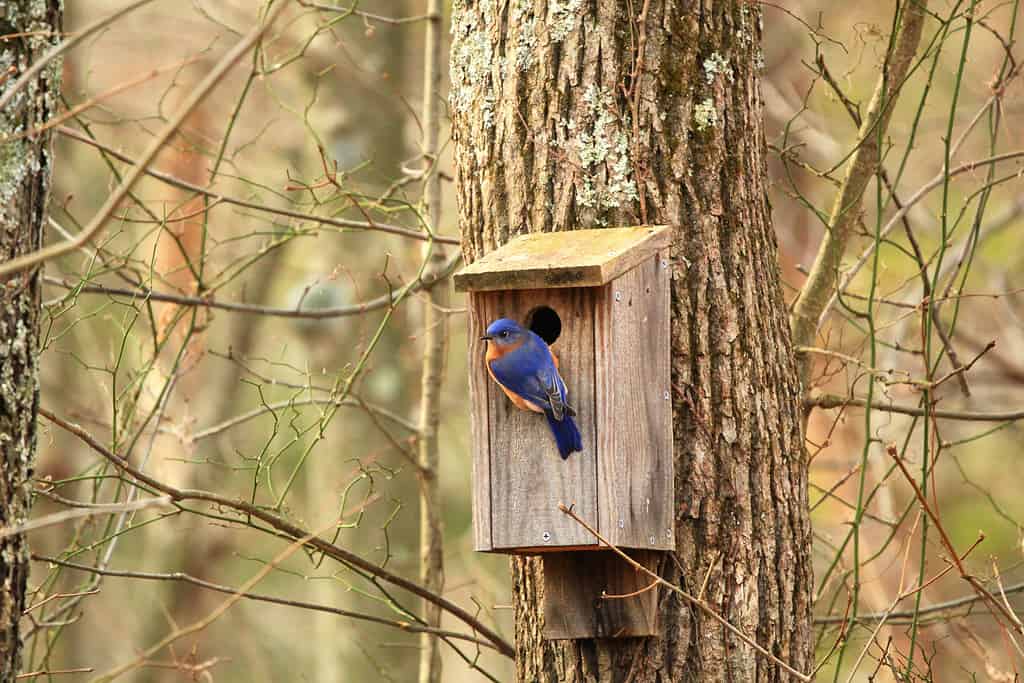
A box with an opening of 1.5 inches is perfect for bluebirds.
©iStock.com/db_beyer
Creating a nesting box that will attract bluebirds is a great way to help the environment and bring some extra beauty into your yard. To ensure you’ve created the perfect box for bluebirds, there are some key features that you’ll need to consider.
First and foremost, the entrance hole should be 1 1/2 inches in diameter. This is the perfect size for adult bluebirds but also small enough to keep out predators. The box should also be made of sturdy material like cedar and should include a sloped roof for protection from the elements.
For the interior, it’s important to have a lining that will keep the babies warm and dry. Cedar shavings are a great option, and they’re also easy to replace when necessary. The box should also have ventilation holes that will keep the interior cool during the summer months.
Finally, make sure that the box is mounted on a pole or tree at least five feet off the ground. This will ensure that the birds have the privacy and safety they need.
By following these steps and providing the right size and materials, you can create the perfect nesting box that will attract bluebirds for years to come.
2. Attract Bluebirds With Suitable Food Sources

You can’t go wrong by leaving out a tray of mealworms for bluebirds.
©iStock.com/MelodyanneM
One of the best ways to attract bluebirds to your backyard is to provide suitable food sources. To do this, you should offer a variety of different foods that bluebirds tend to enjoy.
Some of the best food sources for bluebirds are mealworms. Either live or dried mealworms will definitely attract bluebirds to your yard. You can also offer them unsalted sunflower seeds, suet, berries, and soft fruits. If you offer a mix of these foods, you’ll likely have more success in attracting the birds.
You can also try making a suet cake yourself, which is a mixture of suet, peanut butter, and other bird-friendly ingredients. It’s a great way to attract a wide range of different birds, including bluebirds.
3. Keep Your Yard Free of Predators

Cats and snakes are major predators of bluebirds.
©Kuttelvaserova Stuchelova/Shutterstock.com
Keeping your yard free of predators is an important step to take if you want to attract bluebirds. Predators can threaten the safety and well-being of bluebirds, making them less likely to frequent your yard. Fortunately, there are a few simple steps you can take to keep predators away.
- Keep your yard free of food sources that could attract wild animals. This includes things like unsecured pet food, low-hanging bird feeders, and garbage cans.
- Prune and trim overgrown vegetation in your yard, as hiding spots for predators can be created this way.
- Install motion-activated lights or sprinklers around your yard. These can help startle away predators when they approach.
- Install fencing or netting around the perimeter of your yard to keep predators out.
- Install predator guards on poles or posts where nest boxes are mounted to deter climbing predators like snakes or raccoons.
By taking these steps, you can help ensure that your yard stays safe and comfortable for bluebirds.
4. Create an Attractive Open Habitat for Bluebirds

Bluebirds prefer an area with low grass surrounded by perches. Short lawns are perfect.
©Steve Byland/Shutterstock.com
Creating an attractive habitat for bluebirds can be an enjoyable and rewarding experience. To get started, you’ll need to prepare the right environment for them. Bluebirds prefer open areas with plenty of grass and trees, so you’ll need to create a space that mimics their natural habitat. Be sure to avoid the use of chemicals in the lawn and keep the grass trimmed short. Bluebirds prefer areas with low-cut grasses surrounded by perimeter perches.
You can begin by clearing away any brush and debris and then planting some bushes, shrubs, and trees. Bluebirds like to nest in trees, so make sure to provide plenty of tall trees with robust branches. Planting wildflowers and other berry bushes can provide food sources for bluebirds.
5. Attracting Bluebirds with Trees and Shrubs
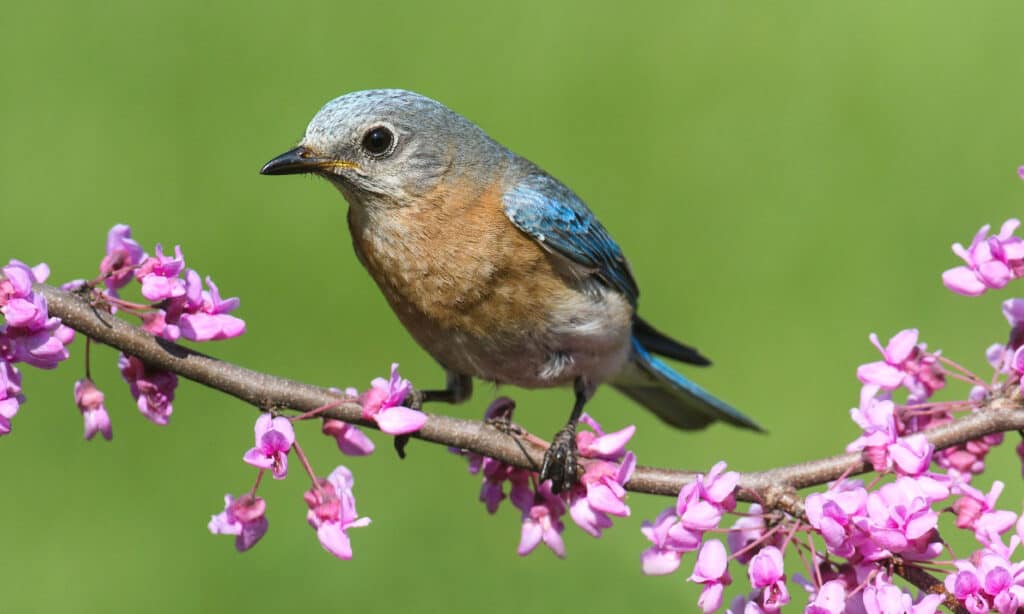
Cherry, juniper, and elderberry trees and bushes are attractive to bluebirds.
©Steve Byland/Shutterstock.com
Attracting bluebirds to your backyard can be a fun and rewarding experience, and the easiest way to do it is to provide the birds with the right type of vegetation. Shrubs and trees are essential for providing the birds with cover, and there are a few species that are particularly popular among bluebirds.
The eastern bluebird, the most common species of bluebird in North America, prefers open fields with scattered trees and shrubs. Trees like dogwood, hawthorn, and cherry are popular among bluebirds because of the abundance of fruits and insect prey that they provide to the birds.
Shrubs like cotoneaster, viburnum, and serviceberry are also great for bluebirds. These shrubs attract insects for the birds to feed on, and they also provide shelter from predators. The dense branches of these shrubs also provide a safe place for the birds to build their nests.
As well as providing cover, trees, and shrubs can also help to create the perfect nesting environment for bluebirds. Trees like oaks and maples produce a lot of dead limbs that are ideal for the birds to use as nesting material.
When selecting trees and shrubs to attract bluebirds to your backyard, it’s important to remember that the birds need both food and shelter. By providing them with both, you’re sure to have bluebirds coming to your yard in no time.
6. Attracting Bluebirds with Water Sources
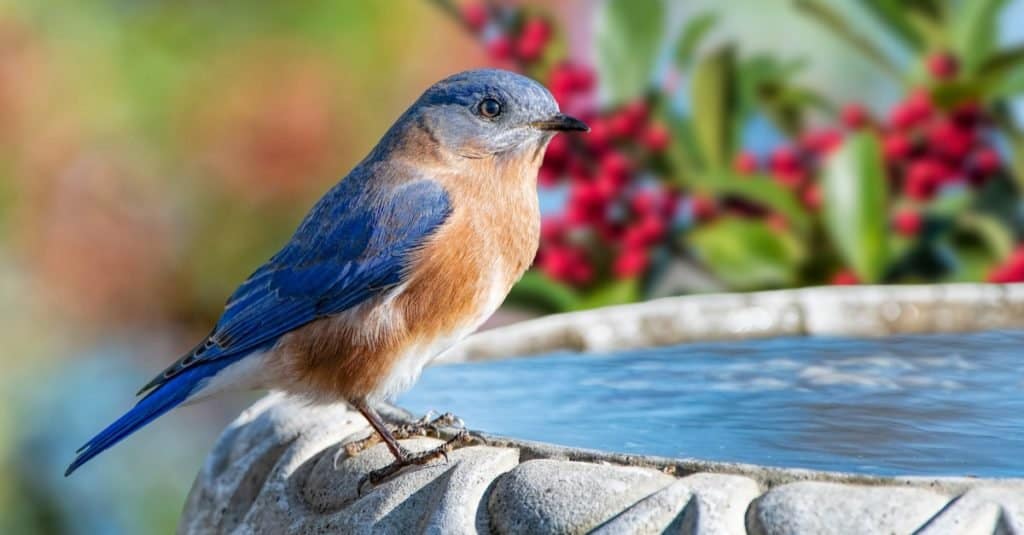
A simple bubbling birdbath is a great way to attract bluebirds to your yard.
©Bonnie Taylor Barry/Shutterstock.com
Water is essential for birds, and freshwater sources can be a great way to attract bluebirds. Birdbaths, small ponds, and streams are all good options for providing water for bluebirds. The water should be shallow enough for them to stand on and bathe in. Additionally, provide a few rocks or pebbles on the bottom of the water source, so the birds can stand on them while they bathe.
Almost all animals prefer moving water over stagnant water. Using a solar-powered fountain or dripper is a great solution to attract more birds!
To keep the water clean, change it out at least once a week. This will reduce the chance of disease spreading among the birds. Also, adding a few drops of apple cider vinegar to the water can help keep it clean and free of bacteria.
7. Leave Dead Trees Standing
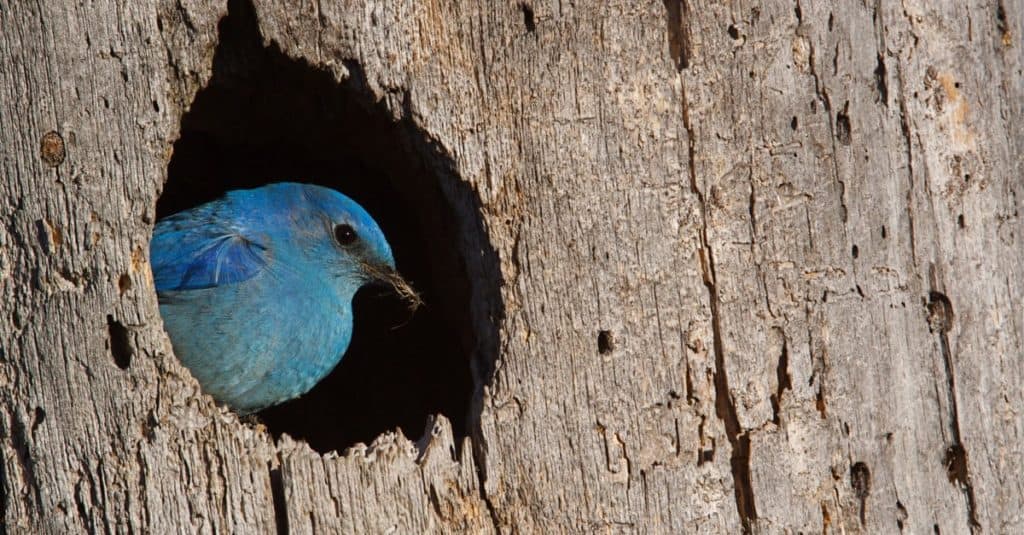
Bluebirds are cavity nesters. Here we see a mountain bluebird at home in a Ponderosa Pine.
©Tom Reichner/Shutterstock.com
Dead trees provide important habitats for bluebirds and other cavity nesters. These trees offer valuable nesting and roosting sites and should be left standing whenever possible. Leaving dead trees standing provides a safe and secure environment for these birds to build their homes and protect their young.
Dead trees also offer food and shelter for a variety of species, including insects, small mammals, and other wildlife. Their hollowed trunks and branches provide a safe space for small animals to hide from predators.
Removing dead trees can have a negative impact on a wide range of species. To ensure that these birds and other animals have access to safe and secure habitats, it is important to leave dead trees standing. Additionally, leaving the limbs on live trees can provide additional shelter and protection for cavity nesters.
Dead trees can also help to maintain the balance of a healthy ecosystem. They provide an important source of nutrients for the soil and help to reduce soil erosion. They also offer a source of energy for fungi and other organisms that help to break down and recycle organic matter.
8. Use No Pesticides
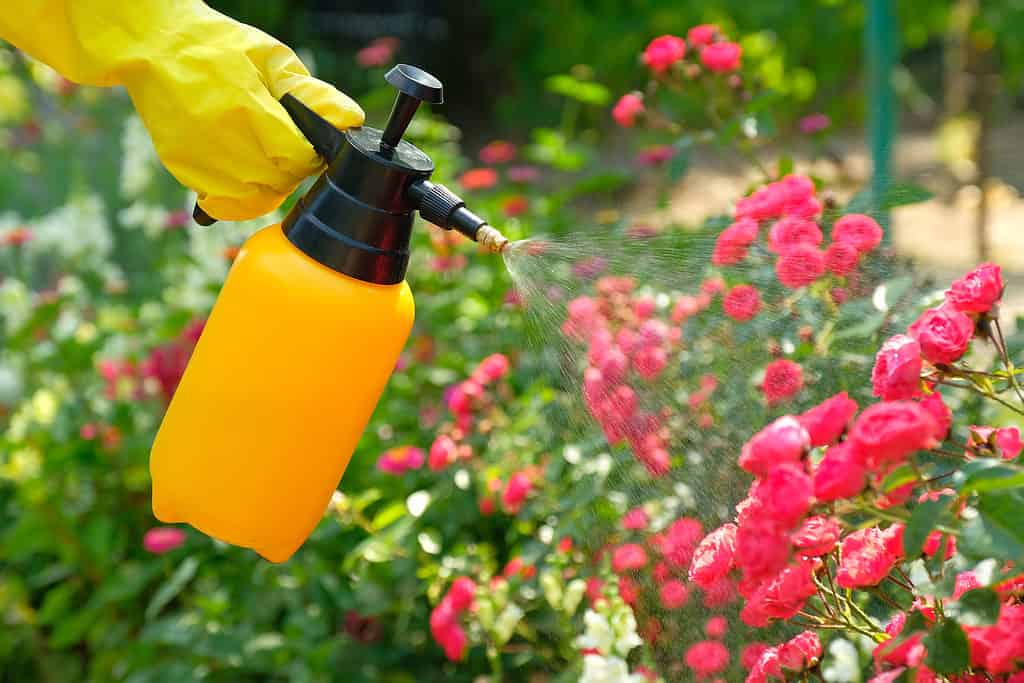
Pesticides are very harmful to all birds, especially insect eaters like bluebirds.
©Savanevich Viktar/Shutterstock.com
Protecting bluebirds from the use of pesticides and lawn chemicals is paramount to their health and safety. Bluebirds are a beloved part of our ecosystem and should be protected from the harmful effects of pesticides and lawn chemicals.
The majority of a bluebird’s diet comes from the insects they forage on the ground. These insects are vulnerable to the effects of pesticides, and any use of them can be dangerous to bluebirds. Any exposure to pesticides can have serious health consequences for bluebirds, such as neurological damage, reproductive issues, and even death.
It is important to be conscious of the impacts of pesticides and lawn chemicals on bluebirds. If you do use pesticides, be sure to use them sparingly and only when absolutely necessary. Additionally, be sure to keep the pesticide products away from areas where bluebirds may be foraging and nesting.
9. Keep Cats Indoors
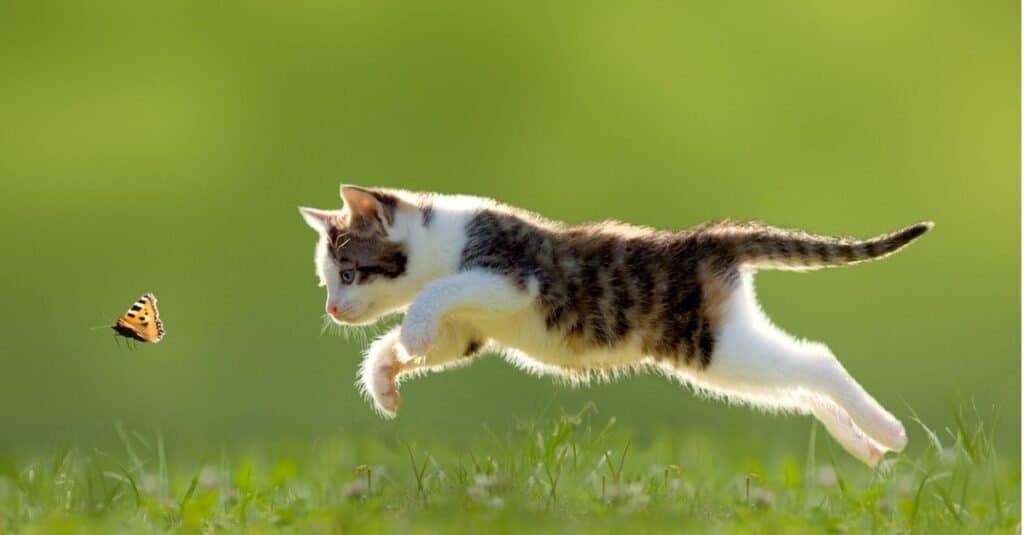
Domesticated cats are very effective at hunting, making them one of the deadliest cats.
©iStock.com/Leoba
Cats are beloved pets among many households, but it is important to keep them indoors to protect wild bird populations. According to research, cats kill 1 to 4 billion birds every year, and this is endangering over one-third of the 800 birds that are native to the USA. Cats are solely responsible for putting many birds at risk of extinction and killing up to 20 billion other kinds of animals.
Keeping cats indoors is a simple and effective way to help protect wild bird populations. It prevents cats from killing birds in your backyard and keeps them from wandering off and hunting birds in other areas. It can also help to reduce the spread of diseases and parasites between animals. Furthermore, keeping cats indoors helps to minimize the disruption of natural ecosystems, as cats are not native to many of the areas where bird populations are endangered.
10. Monitor and Maintain a Healthy Bluebird Nest Box
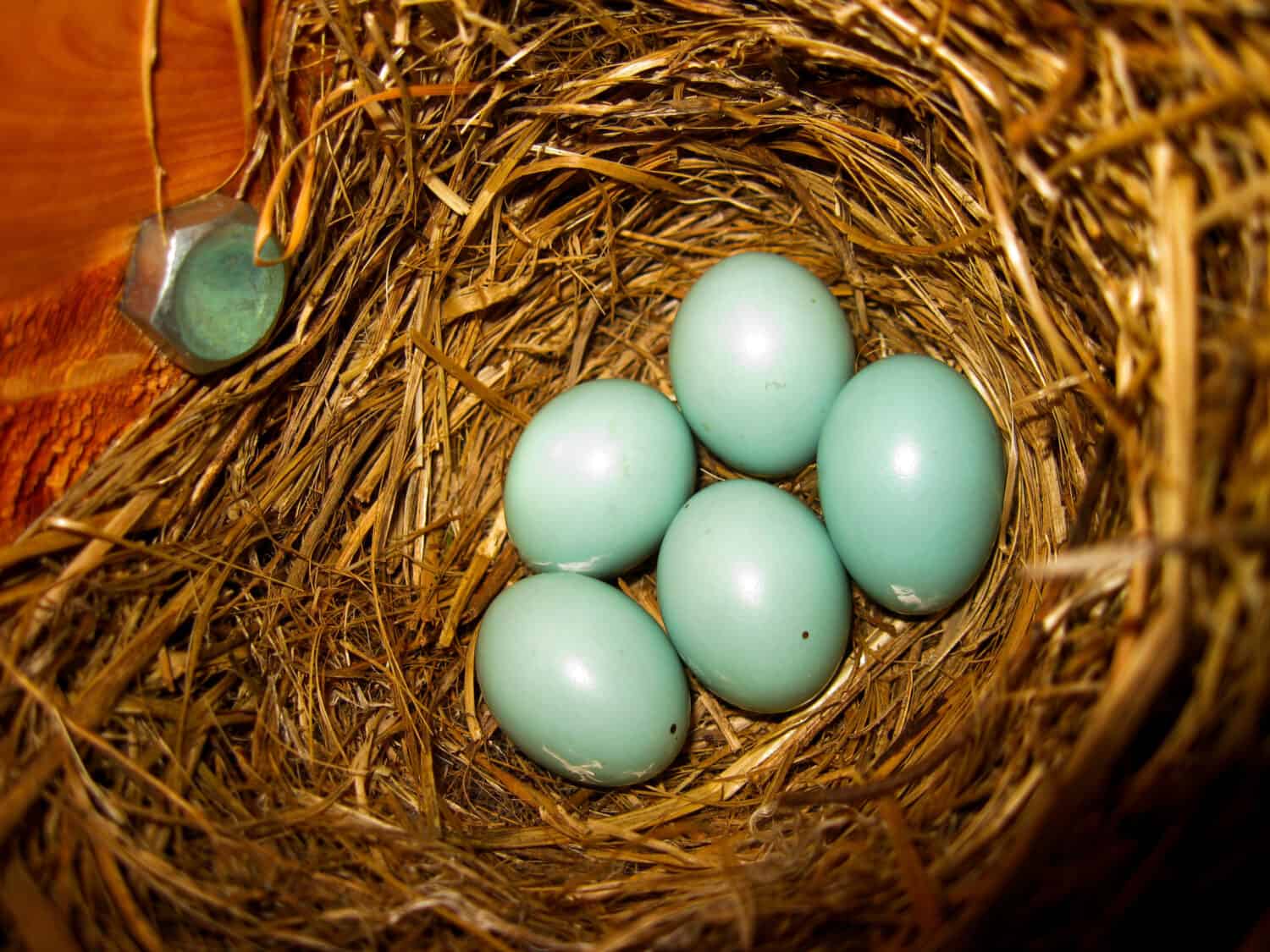
Be sure that your nesting box is watertight to protect the precious cargo.
©Stormy James/Shutterstock.com
Keeping a bluebird nest box healthy is a key part of bluebird conservation. If a bluebird looks in the box and it is full of moldy grass or fungi, it will likely move on to a better nesting site. Here’s how to monitor and maintain the box:
- Regularly inspect the box for signs of damage or decay. Look for holes, cracks, or other openings that could allow predators and weather inside.
- If there is nesting material inside the box, check it for signs of wear or damage.
- Clean the box once a year, in late fall. Remove all nesting material and debris, and clean the box with a mild soap and water solution.
- Look for a bluebird nest in the box. Bluebird nests are small, cup-shaped structures made of grass, twigs, leaves, and other materials.
- Once a clutch of eggs is laid, look for a blue-green-colored egg. Bluebird eggs are usually light blue or green and speckled with brown or gray spots.
By following these steps, you can help ensure a safe and healthy environment for bluebirds to nest.
Summary of How to Attract Bluebirds to Your Yard: 10 Effective Methods
| Method | |
|---|---|
| 1 | Install The Perfect Nest Box for Bluebirds |
| 2 | Attract Bluebirds With Suitable Food Sources |
| 3 | Keep Your Yard Free of Predators |
| 4 | Create an Attractive Open Habitat for Bluebirds |
| 5 | Attracting Bluebirds with Trees and Shrubs |
| 6 | Attracting Bluebirds with Water Sources |
| 7 | Leave Dead Trees Standing |
| 8 | Use No Pesticides |
| 9 | Keep Cats Indoors |
| 10 | Monitor and Maintain a Healthy Bluebird Nest Box |
The photo featured at the top of this post is © Richard Seeley/Shutterstock.com
Thank you for reading! Have some feedback for us? Contact the AZ Animals editorial team.






